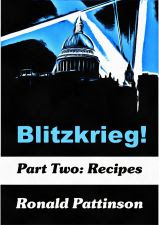What makes it different? Once again, it’s the hopping. Which is far lower than in the other Pale Ales. Just 5.25 lbs per quarter (336 lbs) of malt. Compared to between 14.5 lbs and 20 lbs. Quite a big difference, then. Though its gravity is a little higher than that of P2.
The grist isn’t the same, either. As there’s some sugar as well as the pale malt. Not sure exactly what sort of sugar, as there’s no description in the brewing record. I’ve guessed No. 1 invert. Not exactly a daring guess.
Three types of hops: Californian and Kent from the 1885 harvest and Worcester from 1886. Just not all that many of them. Though it still comes out 42 (Calculated) IBU.
As a Light Bitter, this would have had no ageing. It would have been drunk within a couple of weeks of racking.
| 1887 Truman (Burton) Light Bitter | ||
| pale malt | 12.75 lb | 91.07% |
| No. 1 invert sugar | 1.25 lb | 8.93% |
| Cluster 180 mins | 1.00 oz | |
| Fuggles 60 mins | 1.00 oz | |
| Goldings 30 mins | 1.00 oz | |
| Goldings dry hops | 0.50 oz | |
| OG | 1064 | |
| FG | 1019 | |
| ABV | 5.95 | |
| Apparent attenuation | 70.31% | |
| IBU | 42 | |
| SRM | 6.5 | |
| Mash at | 150º F | |
| Sparge at | 170º F | |
| Boil time | 180 minutes | |
| pitching temp | 58º F | |
| Yeast | WLP013 London Ale (Worthington White Shield) | |











































































2 comments:
Nobody these days would describe a 6% ABV brew as "light" 😀
I think light might have referred to its hopping level which at 42 IBU would have been quite low then.
Oscar
Post a Comment